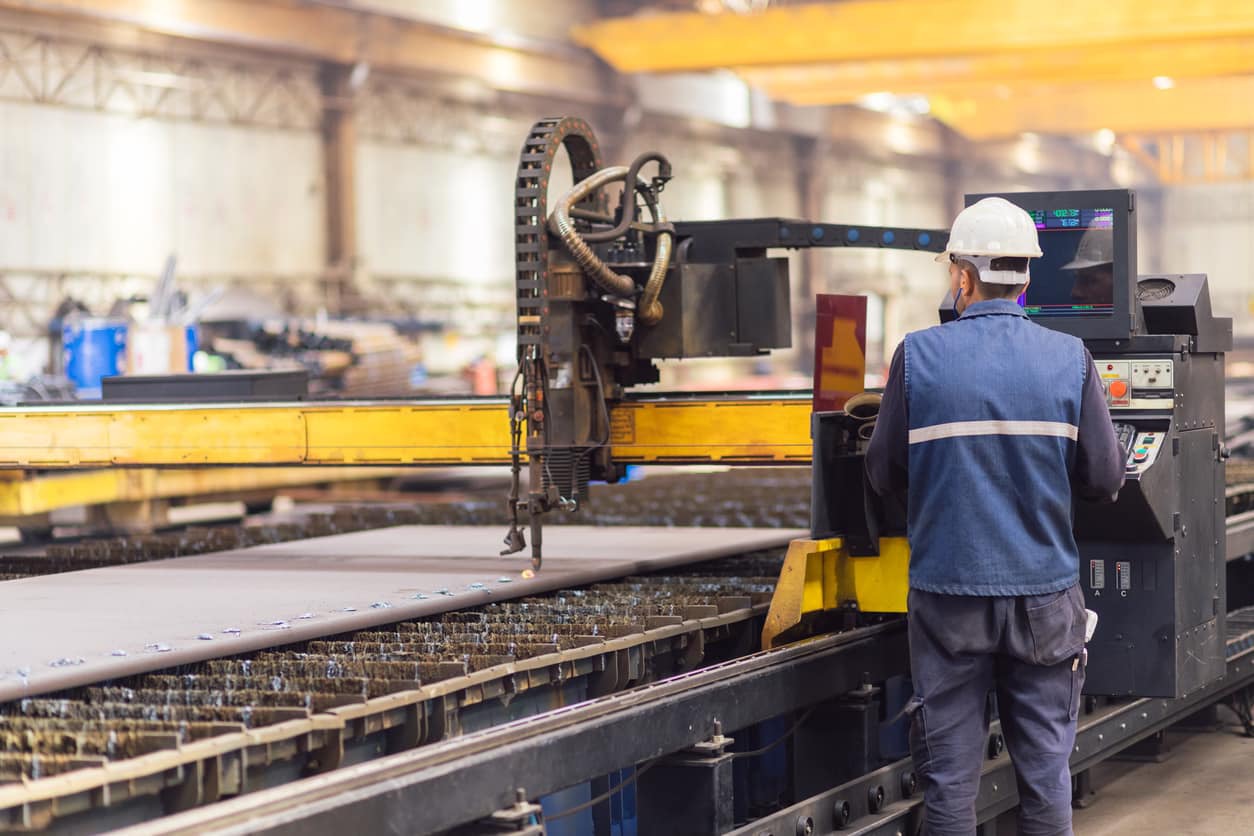How to Prevent CNC Machine Fires in Industrial Facilities
- Install a supplementary special hazard fire suppression system
- Implement routine cleaning and preventative maintenance services
- Adhere to optimal temperature and operation speed recommendations
Computer Numerical Control (CNC) equipment and Electrical Discharge Machines (EDM) are sophisticated milling, turning, and grinding machines. Industrial and energy facilities rely on these machines to accomplish their day-to-day operations as they are consistent, efficient, and reliable.
While these advanced machines provide manufacturers numerous benefits, they also pose a significant fire hazard as they use oil-based lubricants that can overheat, ignite, and cause a flash fire. A single spark can turn a CNC machining operation into a hazardous situation that results in lengthy downtime and costly equipment repairs.
Luckily, there are several precautions manufacturers can take to minimize industrial machine fires. Here are three tips to help reduce the fire hazard associated with CNC machines in industrial and energy facilities.
1. Install a Supplementary Special Hazard Fire Suppression System
Industrial and energy facilities need particular fire and life safety systems to suppress the unique special hazards in these environments. Facility managers should install an additional special hazard fire suppression system to protect CNC machines, regardless of whether the building is fitted with a whole-building fire detection and suppression system. Installing a supplementary special hazard fire suppression system enables early fire detection and suppression, even before the fire becomes apparent to operators.
While these valuable industrial machines need to be protected from fire damage, they may be sensitive to traditional water-based fire suppression systems. When specific environments require an alternative form of protection, special hazard fire suppression systems come into play.
Special hazard suppression systems quickly detect and suppress fires without interrupting business continuity or incurring catastrophic damage to crucial business assets like CNC machines. Clean agent suppression systems, a common type of special hazard suppression system, use chemical agents or inert gas to extinguish Class A, B, and C fires effectively. As the name suggests, these systems are “clean” and leave no residue behind, making them ideal for valuable electronics and industrial environments.
Related Resource
WHAT ARE THE DIFFERENT TYPES OF SPECIAL HAZARD SUPPRESSION SYSTEMS?
Discover the five main types of special hazard suppression systems. Learn More →
Why Industrial Facilities Need to Install a Special Hazard Fire Protection System for CNC Equipment
Manufacturers might wonder why they need a specialized solution tailored to their equipment. According to the National Fire Protection Association (NFPA), industrial equipment is the leading cause of structural fires in manufacturing facilities. In addition to the high fire risk, typical CNC tools are expensive and integral to business continuity.
Since these specialized machines are a hefty investment, it is more economical to add additional fire protection measures to safeguard the machine, operators, and the entire facility rather than pay for significant repairs and downtime if and when a fire occurs.
When manufacturers install a localized special hazard suppression system, they protect the equipment and the facility as a whole. Since CNC machine fires can quickly grow out of control, a dedicated special hazard system will prevent fires from spreading to other areas within the facility, protecting additional costly machinery located throughout the facility.
2. Implement Routine Cleaning and Preventative Maintenance Services
Facility managers should establish routine cleaning procedures and continually maintain their CNC machines to minimize machine malfunctions and fire hazards.
Since industrial and energy companies need to focus their efforts on daily operations, they can rely on experienced fire protection service providers to implement comprehensive inspection and preventive maintenance and system monitoring solutions to ensure compliance, functionality, and machine safety.
Regular cleaning services prevent the buildup of oil-based liquids, and a real-time monitoring solution monitors CNC equipment 24/7 to ensure a speedy deployment of local authorities in the event of an emergency, effectively reducing downtime and repair costs.
3. Adhere to Optimal Temperature and Operation Speed Recommendations
To reemphasize, coolant, lubricant, and other oil-based fluids used in CNC machining operations are highly flammable and require proactive measures to ensure safety. Operators can reduce the risk of fire by adhering to the optimal settings provided by the Original Equipment Manufacturer (OEM).
OEMs typically recommend specific temperature ranges and operation speeds for running CNC machines. Ensuring continual compliance with OEM suggestions is an effective short-term solution to mitigating the likelihood of machine fires.
Prevent Costly CNC Machine Downtime with a Special Hazard Fire Protection Solution
When it comes to combating fires, installing a localized, special hazard fire suppression system is the most effective way to protect CNC machines, personnel, and the facility at large. The expense of a special hazard system is minimal compared to the investment of modern CNC machines.
However, choosing the ideal special hazard suppression system is a complex process.
Businesses in the industrial and energy sector should partner with an experienced fire protection company to design, install, inspect, monitor, and maintain a cost-effective special hazard fire protection system tailored to their facility, ensuring regulatory compliance and continual protection of expensive CNC and EDM equipment.








